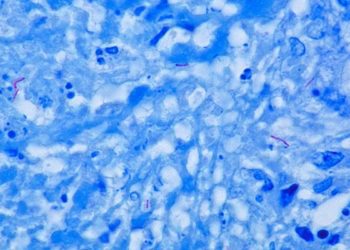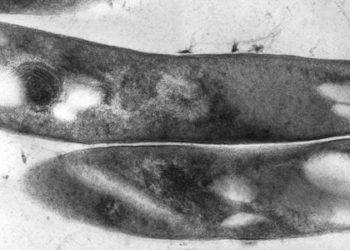#VisualAbstract: Rifapentine-moxifloxacin noninferior to standard of care treatment for pulmonary tuberculosis
1. Rifapentine-moxifloxacin treatment was shown to be non-inferior compared to standard therapy for tuberculosis.
2. Rifapentine without moxifloxacin treatment was shown to be inferior to the standard of care treatment.
Evidence Rating Level: 1 (Excellent)
Study Rundown: There is a need for shorter tuberculosis treatment as adherence to the daily 6-month therapy has been shown to be challenging. In a randomized controlled trial, researchers compared the standard 6-month tuberculosis treatment to a 4-month rifapentine-moxifloxacin treatment. The study determined the rifapentine-moxifloxacin treatment was non-inferior to the standard of care therapy. While no evidence was found to indicate the superiority of the rifapentine-moxifloxacin treatment, this study showed that shorter regimens are possible in the treatment of pulmonary tuberculosis. A major strength of this study was in its diversity of trial participants with participants from many different countries including adolescents and patients with human immunodeficiency virus (HIV). A limitation of the study was the awareness of treatment-group assignment and the high cost of the rifapentine-moxifloxacin regiment. Nonetheless, the study found a shorter tuberculosis treatment which was non-inferior to the current standard of care.
Click to read the study in NEJM
Relevant Reading: High-dose rifapentine with moxifloxacin for pulmonary tuberculosis
In-Depth [randomized controlled trial]: This randomized controlled trial enrolled 2,516 patients at 34 sites in 13 countries. Patients eligible for trial were at least 12 years of age with newly diagnosed pulmonary tuberculosis that was susceptible to isoniazid, rifampin, and fluoroquinolones on culture. Patients with HIV with CD4 T-cell counts under 100 cells per cubic millimeter were excluded from the trial. Patients were randomized in a 1:1:1 ratio to receive either the control regiment, a rifapentine regiment, or a rifapentine-moxifloxacin regiment, respectively. The control regiment involved once-daily rifampin, isoniazid, pyrazinamide, and ethambutol for 4 weeks, followed by rifampin and isoniazid for 18 weeks. The rifapentine regiment involved rifapentine, isoniazid, pyrazinamide, and ethambutol once daily for 8 weeks followed by 9 weeks of rifapentine and isoniazid. Lastly, the rifapentine and moxifloxacin regiment involved rifapentine, isoniazid, pyrazinamide, and moxifloxacin followed by rifapentine, isoniazid, and moxifloxacin for 9 weeks. The primary endpoint was survival free of tuberculosis 12 months following randomization. The study found the rifapentine-moxifloxacin regiment (unfavorable outcome, 15.5%) was non-inferior to the control regiment (unfavorable outcome, 14.6%) (difference, 1.0 percentage points; 95% confidence interval [CI], -2.6 to 4.5). The rifapentine only regiment ((unfavorable outcome, 17.7%) did not show noninferiority compared to the control group (unfavorable outcome, 14.6%) (difference, 3.0 percentage points; 95% CI, -0.6 to 6.6). As for safety, 18.8% of the rifapentine-moxifloxacin patients compared to 19.3% of the control group patients experienced a grade 3 or higher adverse event (95% CI, -4.3 to 3.2). Overall, the shorter rifapentine-moxifloxacin treatment was shown to be non-inferior to the standard of care regimen for tuberculosis.
©2021 2 Minute Medicine, Inc. All rights reserved. No works may be reproduced without expressed written consent from 2 Minute Medicine, Inc. Inquire about licensing here. No article should be construed as medical advice and is not intended as such by the authors or by 2 Minute Medicine, Inc.







